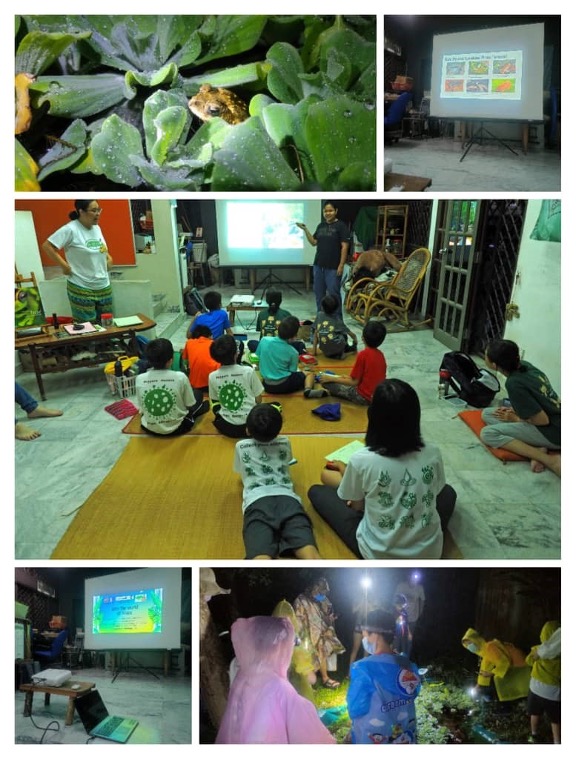Into the world of frogs through their bioacoustics: A study in Northen Peninsular Malaysia
By Dasi Ong, Peninsular Maslaysian Frogs Team
In a remarkable discovery during my study in Peninsular Malaysia, I captured the diurnal call of Hylarana glandulosa (also known as Pulchrana glandulosa). Traditionally, it’s understood that most frogs in this region are nocturnal, calling at night to avoid predators. However, using Passive Acoustic Monitoring (PAM) with Swiftones and the BEAT program, we uncovered that this species also calls during the day. This significant finding was documented in the short communication article, “The diurnal advertisement and response call of Pulchrana glandulosa (Anura: Ranidae) (Boulenger, 1882), from Langkawi Island, Kedah, Peninsular Malaysia,” published in Amphibia-Reptilia.
For this research, Swiftones, an advanced field recording device, was employed to capture high-quality audio data. Specialized software was then used for meticulous data analysis, enabling us to identify and confirm the diurnal calling patterns of Hylarana glandulosa. This technological integration was crucial, not only expanding our understanding of the species’ behaviour but also challenging the prevailing belief that nocturnal calling is primarily a predator avoidance strategy. Our findings suggest that some species might have evolved alternative adaptations.
Reflecting on this discovery, the importance of remaining open to new possibilities in ecological research becomes evident, as such findings can enhance our knowledge and lead to more effective conservation strategies. Understanding the diurnal calling behaviour of Hylarana glandulosa can inform conservationists about the species’ habitat needs and guide protective measures during their active hours.
Looking ahead, my aspirations in bioacoustics include creating a comprehensive database of frog calls in Peninsular Malaysia, akin to the FrogID project in Australia. I aim to record and describe all frog calls in the region and develop an Android app that identifies frog species by their calls, similar to the Pokémon Pokédex. This app will serve as a valuable tool for educating the community and promoting citizen science across all age groups, encouraging a deeper appreciation and understanding of local biodiversity.
As part of the BEAT program, I led an outreach initiative titled “Intro to the Life of Frogs,” aiming to connect communities with the diversity and significance of anurans (frogs and toads) through interactive workshops. In collaboration with NatureClassroom and Pop and Chee Healthy Home Farming, we launched events featuring presentations on frog ecology and bioacoustics, hands-on arts and crafts, and guided frog hunts. These activities helped participants, particularly students, retain knowledge and develop a creative, emotional connection with nature.
The workshops included practical experiences such as ethical frog collection and safe handling practices, allowing participants to observe and interact with various frog species. This hands-on approach transformed participants’ perceptions of frogs from seeing them as “ugly and disgusting” to appreciating them as “cute” and worthy of admiration. The initiative’s success led to a monthly series supported by local partners including Darul Aman Sanctuary, Haus by Wildmums, and two NGOs, Geng Bersih Kampung and Raising Kids Penang, engaging over 250 participants from diverse age groups by April 2024.
This project demonstrated the power of community engagement in enhancing scientific understanding and promoting conservation efforts. The positive feedback and continued participation highlighted the effectiveness of interactive education in raising awareness about bioacoustics and fostering environmental stewardship. Moving forward, our team remains committed to improving the workshop experience and encouraging other researchers to embrace similar outreach opportunities.
In summary, the discovery of Hylarana glandulosa‘s diurnal calling behaviour underscores the value of advanced technology in ecological research and the importance of community engagement in conservation. By combining rigorous scientific methods with interactive public education, we can deepen our understanding of biodiversity and foster a culture of environmental stewardship.
